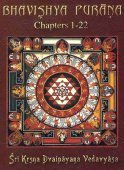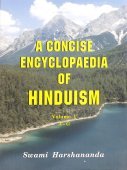Janardana, Jana-ardana, Janārdana: 26 definitions
Introduction:
Janardana means something in Hinduism, Sanskrit, the history of ancient India, Marathi. If you want to know the exact meaning, history, etymology or English translation of this term then check out the descriptions on this page. Add your comment or reference to a book if you want to contribute to this summary article.
In Hinduism
Shaktism (Shakta philosophy)
Source: Wisdom Library: ŚāktismJanārdana (जनार्दन, “Exciting, or Agitating, Men”):—Another name for Viṣṇu, as in, one of the male offspring from Mahāsarasvatī (sattva-form of Mahādevī). Mahāsarasvatī is one of the three primary forms of Devī, the other two being Mahālakṣmī and Mahākālī. Not to be confused with Sarasvatī, she is a more powerful cosmic aspect (vyaṣṭi) of Devi and represents the guṇa (universal energy) named sattva. Also see the Devī Māhātmya, a Sanskrit work from the 5th century, incorporated into the Mārkaṇḍeya-Purāṇa.

Shakta (शाक्त, śākta) or Shaktism (śāktism) represents a tradition of Hinduism where the Goddess (Devi) is revered and worshipped. Shakta literature includes a range of scriptures, including various Agamas and Tantras, although its roots may be traced back to the Vedas.
Pancaratra (worship of Nārāyaṇa)
Source: Wisdom Library: PāñcarātraJanārdana (जनार्दन, “world-mover”):—One of the twenty-four forms of Viṣṇu through which Nārāyaṇa manifests himself. The meaning of this title is “The protector from negative forces”. He is accompanied by a counterpart emanation of Lakṣmī (an aspect of Devī) who goes by the name Umā.
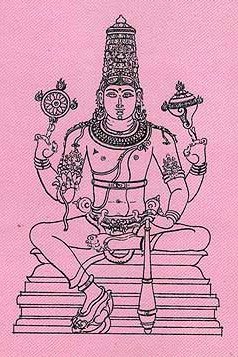
Pancaratra (पाञ्चरात्र, pāñcarātra) represents a tradition of Hinduism where Narayana is revered and worshipped. Closeley related to Vaishnavism, the Pancaratra literature includes various Agamas and tantras incorporating many Vaishnava philosophies.
Vaishnavism (Vaishava dharma)
Source: ISKCON Press: GlossaryJanārdana (जनार्दन).—A name for the Supreme Personality of Godhead meaning “He who is the original abode and protector of all living beings”.
Source: Pure Bhakti: Bhagavad-gita (4th edition)Janārdana (जनार्दन) refers to “name of Bhagavān meaning ‘one who thrills the hearts of mankind’”. (cf. Glossary page from Śrīmad-Bhagavad-Gītā).
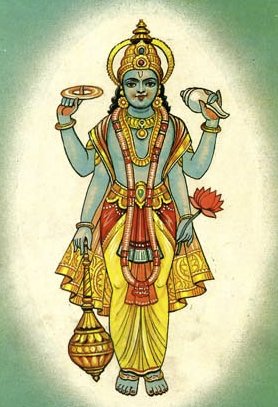
Vaishnava (वैष्णव, vaiṣṇava) or vaishnavism (vaiṣṇavism) represents a tradition of Hinduism worshipping Vishnu as the supreme Lord. Similar to the Shaktism and Shaivism traditions, Vaishnavism also developed as an individual movement, famous for its exposition of the dashavatara (‘ten avatars of Vishnu’).
Purana and Itihasa (epic history)
Source: archive.org: Puranic Encyclopedia1) Janārdana (जनार्दन).—A synonym of Mahāvīṣṇu (Śrī Kṛṣṇa). Because he made the Dasyus (Asuras—demons) tremble, Śrī Kṛṣṇa was called Janārdana.
"He, who has lotus as his seat, who is eternal, imperishable and unchangeable, he who has all these attributes is Puṇḍarīkākṣa (lotus-eyed) and he who makes the Asuras tremble is Janārdana." (Mahābhārata Udyoga Parva, Chapter 70, Stanza 6).
2) Janārdana (जनार्दन).—See under Ḍibaka.
Source: archive.org: Shiva Purana - English TranslationJanārdana (जनार्दन) is the name of a deity corresponding to a “Rudraksha with ten faces” (Dvādaśāsya), according to the Śivapurāṇa 1.25, while explaining the greatness of Rudrākṣa:—“[...] o Maheśānī, a Rudrākṣa with ten faces (dvādaśāsya) is Lord Janārdana Himself. O Deveśī, by wearing it, the devotee shall achieve the fulfilment of all desires”.
Source: Cologne Digital Sanskrit Dictionaries: The Purana IndexJanārdana (जनार्दन).—A name of Vāsudeva;1 Viṣṇu who took the form of Hayagrīva and appeared before Agastya at Kāñcī;2 as brother of Devī put down the Hiraṇyas in the Bhaṇḍa-Lalitā war;3 as Kalki put down the Hūṇas, Yavanas, etc;4 in the form of Pitṛs in Gayā;5 became black due to poison;6 becomes Brahmā, Viṣṇu and Śiva affected by the qualities of satva, rajas and tamas;7 manifestation and forms described.8
- 1) Vāyu-purāṇa 96. 51; 106. 54.
- 2) Brahmāṇḍa-purāṇa II. 19. 180; 25. 56-7; III. 71. 78 and 93; 73. 87; IV. 5. 8, 14; 9. 28, 47, 64; 12. 21; 15. 14.
- 3) Brahmāṇḍa-purāṇa II. 29. 103, 133.
- 4) Brahmāṇḍa-purāṇa II. 39. 49.
- 5) Vāyu-purāṇa 108. 85, 89; 109. 24 and 34.
- 6) Vāyu-purāṇa 54. 59.
- 7) Viṣṇu-purāṇa I. 2. 61-7.
- 8) Viṣṇu-purāṇa I. 22. 23-72; III. 8. 11; 18. 35.

The Purana (पुराण, purāṇas) refers to Sanskrit literature preserving ancient India’s vast cultural history, including historical legends, religious ceremonies, various arts and sciences. The eighteen mahapuranas total over 400,000 shlokas (metrical couplets) and date to at least several centuries BCE.
Chandas (prosody, study of Sanskrit metres)
Source: Shodhganga: a concise history of Sanskrit Chanda literatureJanārdana (जनार्दन) or Janārdana Vibudha (disciple of Ananta and protégé of Kṛṣṇadeva) is the author of the Vṛttapradīpa.—Janārdana Vibudha’s other work includes commentary Bhāvārthadīpikā on Vṛttaratnākara of Kedāra Bhaṭṭa. He mentions about his preceptor Ananta and patron Kṛṣṇadeva, in the introductory verse of his commentary on Vṛttaratnākara.
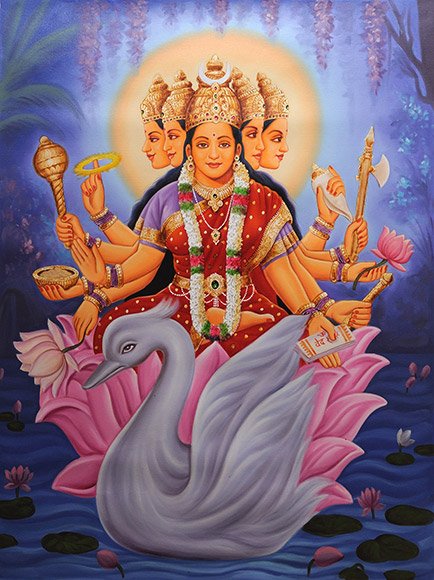
Chandas (छन्दस्) refers to Sanskrit prosody and represents one of the six Vedangas (auxiliary disciplines belonging to the study of the Vedas). The science of prosody (chandas-shastra) focusses on the study of the poetic meters such as the commonly known twenty-six metres mentioned by Pingalas.
Ayurveda (science of life)
Source: archive.org: Vagbhata’s Ashtanga Hridaya Samhita (first 5 chapters)Janārdana (जनार्दन) is a variant spelling for Jārandhara: an Indian pundit credited with co-translating the Aṣṭāṅgahṛdayasaṃhitā: one of the three great works of Vāgbhaṭa.—According to the colophon, the translation was made by the Indian pundit Jārandhara and the Tibetan Lama Rin-chen-bzaṅ-po:— “[...] By India’s Professor Jārandhara and Revising Great Translator Monk Rin-chen-bzaṅ-po it has been [translated], revised, and edited”.
Note: Elsewhere the spelling varies among Janārdana, Jarandāna, Jārandana, Jarandhara, and Jārandhara.

Āyurveda (आयुर्वेद, ayurveda) is a branch of Indian science dealing with medicine, herbalism, taxology, anatomy, surgery, alchemy and related topics. Traditional practice of Āyurveda in ancient India dates back to at least the first millenium BC. Literature is commonly written in Sanskrit using various poetic metres.
General definition (in Hinduism)
Source: WikiPedia: HinduismJanārdana is another name of Vishnu or God and appears as the 126th name in the Vishnu sahasranama. It is also a common name of Krishna being address as such by Arjuna in the Bhagavad Gita.
According to Adi Sankara' s commentary on the Vishnu sahasranama, translated by Swami Tapasyananda, Janardana means "One who inflicts suffering on evil men." Alternatively, it means, "He to whom all devotees pray for worldly success and liberation,".
Source: Oxford Reference: A Dictionary of HinduismOne of the twenty-four avatāras (incarnations) of Viṣṇu. He takes the form of the planets, and distributes the consequences of actions to living beings.
India history and geography
Source: What is India: Inscriptions of the ŚilāhārasJanārdana (fl. 1049 AD), the son of Vevala Ṣaḍaṅgavid, is mentioned in the “Ṭhāṇā plates of Mummuṇirāja”. Accordingly, Janārdana is mentioned amongst fourteen Brāhmaṇas living together, hailing from Karahāṭaka (Karahāṭa), as receiving a gift of several villages. He is associated with the Kāśyapa gotra (clan)
These copper plates (mentioning Janārdana) were discovered in 1956 while digging the ground between the Church and the District Office at Ṭhāṇā, the chief town of the Ṭhāṇā District in Mahārāṣṭra. Its object is to record the grant, by the Śilāhāra Mummuṇirāja, of some villages and lands to learned Brāhmaṇas on the occasion of the lunar eclipse on the fifteenth tithi of the bright fortnight of Phālguna in the Śaka year 970, the cyclic year being Sarvadhārin.
Source: academia.edu: Tessitori Collection I (history)Janārdana (जनार्दन) or “Paṇḍita Janārdana” is the author of the Bālāvabodha commentary on the Kālidāsa’s Raghuvaṃśa, which is included in the collection of manuscripts at the ‘Vincenzo Joppi’ library, collected by Luigi Pio Tessitori during his visit to Rajasthan between 1914 and 1919.—The commentator provides the full text of Kālidāsa’s verses only for the very first one. Otherwise he includes the original words within the commenting sentence. [...]

The history of India traces the identification of countries, villages, towns and other regions of India, as well as mythology, zoology, royal dynasties, rulers, tribes, local festivities and traditions and regional languages. Ancient India enjoyed religious freedom and encourages the path of Dharma, a concept common to Buddhism, Hinduism, and Jainism.
Languages of India and abroad
Marathi-English dictionary
Source: DDSA: The Molesworth Marathi and English Dictionaryjanārdana (जनार्दन).—m (S Punisher of man.) A name of viṣṇu as God.
Source: DDSA: The Aryabhusan school dictionary, Marathi-Englishjanārdana (जनार्दन).—m A name of viṣṇu as God.
Marathi is an Indo-European language having over 70 million native speakers people in (predominantly) Maharashtra India. Marathi, like many other Indo-Aryan languages, evolved from early forms of Prakrit, which itself is a subset of Sanskrit, one of the most ancient languages of the world.
Sanskrit dictionary
Source: DDSA: The practical Sanskrit-English dictionaryJanārdana (जनार्दन).—an epithet of Visnu or Krisna.
Derivable forms: janārdanaḥ (जनार्दनः).
Janārdana is a Sanskrit compound consisting of the terms jana and ardana (अर्दन).
Source: Cologne Digital Sanskrit Dictionaries: Edgerton Buddhist Hybrid Sanskrit DictionaryJanārdana (जनार्दन).—name of a nāga king: Mahā-Māyūrī 246.30.
Source: Cologne Digital Sanskrit Dictionaries: Shabda-Sagara Sanskrit-English DictionaryJanārdana (जनार्दन).—m.
(-naḥ) A name of Vishnu. E. jana mankind, and ardana worshiping; whom men worship. janaiḥ ardyate yācyate puruṣārthalābhāya arda yācane karmaṇi lyuṭ . janaṃ jananam ardati hinasti tāḍayati janān samudravāsinaḥ asurabhedān ardayati vā karttari lyuṭ .
Source: Cologne Digital Sanskrit Dictionaries: Benfey Sanskrit-English DictionaryJānārdana (जानार्दन).—i. e. janārdana + a, patronym. A descendant of Janārdana, Mahābhārata 3, 723.
Source: Cologne Digital Sanskrit Dictionaries: Cappeller Sanskrit-English DictionaryJanārdana (जनार्दन).—[masculine] [Epithet] of Viṣṇu-Kṛṣṇa.
Source: Cologne Digital Sanskrit Dictionaries: Aufrecht Catalogus Catalogorum1) Janārdana (जनार्दन) as mentioned in Aufrecht’s Catalogus Catalogorum:—father of Śriyāditya, father of Rāṇiga, father of Keśavārka.
2) Janārdana (जनार्दन):—son of Puruṣottama, father of Rāmacandra (Rādhāvinoda).
3) Janārdana (जनार्दन):—poet. [Subhāshitāvali by Vallabhadeva]
4) Janārdana (जनार्दन):—pupil of Anubhūtisvarūpa: Tattvāloka, vedānta. Hall. p. 157. Ben. 80.
5) Janārdana (जनार्दन):—Mantracandrikā [tantric]
6) Janārdana (जनार्दन):—Meghadūtaṭīkā. Peters. 3, 19^a. 324. He refers to the commentaries of Sthiradeva, Vallabha, Āsaḍa.
7) Janārdana (जनार्दन):—Vivāhapaṭala jy. B. 4, 194.
8) Janārdana (जनार्दन):—Vairāgyaśataka, Śṛṅgāraśataka. Kāvyamālā.
9) Janārdana (जनार्दन):—father of Vedavyāsa (Tantrasārasaṃgrahaṭīkā).
10) Janārdana (जनार्दन):—from Gūrjara, father of Harijit (Yoginīdaśāphala).
11) Janārdana (जनार्दन):—Kramadīpikāṭīkā.
12) Janārdana (जनार्दन):—Padyābjamālā jy.
13) Janārdana (जनार्दन):—younger brother of Śiromaṇi, son of Jagannivāsa, grandson of Śrīnivāsa: Mantracandrikā.
Source: Cologne Digital Sanskrit Dictionaries: Monier-Williams Sanskrit-English Dictionary1) Janārdana (जनार्दन):—[from jana > jan] m. ([gana] nandy-ādi) ‘exciting or agitating men’, Viṣṇu or Kṛṣṇa, [Mahābhārata iii, 8102; v, 2564; Harivaṃśa 15397; Bhartṛhari; Bhāgavata-purāṇa; Gīta-govinda]
2) [v.s. ...] Name of several men, [Harivaṃśa etc.]
3) [v.s. ...] of a locality, [Tantr.]
4) Jānārdana (जानार्दन):—[from jātṛ] m. [patronymic] [from] jan, Pradyumna, [Mahābhārata]
Source: DDSA: Paia-sadda-mahannavo; a comprehensive Prakrit Hindi dictionary (S)Janārdana (जनार्दन) in the Sanskrit language is related to the Prakrit word: Jaṇaddaṇa.
[Sanskrit to German]
Sanskrit, also spelled संस्कृतम् (saṃskṛtam), is an ancient language of India commonly seen as the grandmother of the Indo-European language family (even English!). Closely allied with Prakrit and Pali, Sanskrit is more exhaustive in both grammar and terms and has the most extensive collection of literature in the world, greatly surpassing its sister-languages Greek and Latin.
Kannada-English dictionary
Source: Alar: Kannada-English corpusJanārdana (ಜನಾರ್ದನ):—
1) [noun] he who destroys the human race or races.
2) [noun] Viṣṇu.
Kannada is a Dravidian language (as opposed to the Indo-European language family) mainly spoken in the southwestern region of India.
See also (Relevant definitions)
Partial matches: Ardana, Jana.
Starts with: Janardana bhatta, Janardana Hegade, Janardana sharman, Janardana Swami, Janardana vibudha, Janardana vyasa, Janardanabhatta, Janardanabhattiya, Janardanacarya, Janardanamahodadhi, Janardanasena, Janardanavibudha.
Ends with: Janavakya Janardana, Lakshmijanardana, Shri Janardana, Shukla janardana, Shuklajanardana.
Full-text (+107): Lakshmijanardana, Shuklajanardana, Vrittapradipa, Janardanavibudha, Punyashloka, Janta, Janardana bhatta, Bhavabhatta samgitaraya, Padyabjamala, Shlokadipika, Jyayishtha, Ardana, Tushtanem, Jagannivasa, Janaddana, Janata, Shri Janardana, Vedavyasa, Janardana sharman, Tattvaloka.
Relevant text
Search found 62 books and stories containing Janardana, Jana-ardana, Janārdana, Jānārdana; (plurals include: Janardanas, ardanas, Janārdanas, Jānārdanas). You can also click to the full overview containing English textual excerpts. Below are direct links for the most relevant articles:
Chaitanya Bhagavata (by Bhumipati Dāsa)
Verse 1.11.108 < [Chapter 11 - Meeting with Śrī Īśvara Purī]
Verse 3.2.368 < [Chapter 2 - Description of the Lord’s Travel Through Bhuvaneśvara and Other Placesto Jagannātha Purī]
Verse 1.1.10 < [Chapter 1 - Summary of Lord Gaura’s Pastimes]
Garga Samhita (English) (by Danavir Goswami)
Verses 2.2.5-6 < [Chapter 2 - Description of Girirāja Govardhana’s Birth]
Verse 2.1.47 < [Chapter 1 - Description of the Entrance in Vṛndāvana]
Verse 2.12.22 < [Chapter 12 - Subduing Kāliya and Drinking the Forest Fire]
Dasarupaka (critical study) (by Anuru Ranjan Mishra)
Part 14 - Other features of the Samudramanthana < [Chapter 6 - Samavakāra (critical study)]
Brihad Bhagavatamrita (commentary) (by Śrī Śrīmad Bhaktivedānta Nārāyana Gosvāmī Mahārāja)
Verse 2.3.125 < [Chapter 3 - Bhajana (loving service)]
Verse 1.3.67 < [Chapter 3 - Prapañcātīta (beyond the Material Plane)]
Verse 2.4.155-157 < [Chapter 4 - Vaikuṇṭha (the spiritual world)]
The Matsya Purana (critical study) (by Kushal Kalita)
Part 4.2a - Akṣayatṛtīyā-vrata < [Chapter 4 - Religious aspects of the Matsyapurāṇa]
Part 4.2f - Madanadvādaśī-vrata < [Chapter 4 - Religious aspects of the Matsyapurāṇa]
Part 3c - Tirthas on the bank of Narmadā < [Chapter 8 - Geographical data in the Matsyapurāṇa]
Srila Gurudeva (The Supreme Treasure) (by Swami Bhaktivedanta Madhava Maharaja)
Avatāras as stated Śrī Madhvācārya < [Chapter 1.5 - Back to Home Village]
Residing at Govardhana in Kãrtika < [Chapter 2.19 - The Concluding Transcendental Pastimes]
Related products
